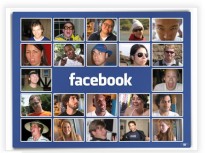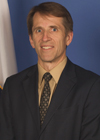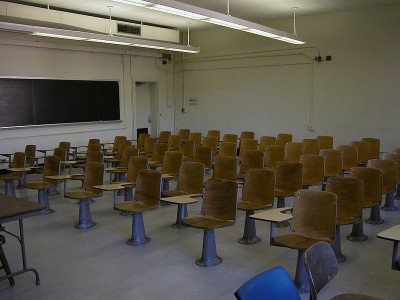Adolescent pain, social media and — what about academics?
The danger of middle school and high school students spending too much time on Facebook and other social media is getting an inordinate amount of attention lately, in part because several high-profile cases that reportedly involved cyberbullying ended in teen suicides.
Last month, a school principal in Ridgewood, New Jersey made headlines and earned himself a few television appearances after telling parents there is “absolutely, positively” no reason for middle school students to be on social networking sites.
The principal gave as his reason a feeling that middle schoolers are not psychologically ready for online bullying — including the kinds of anonymous attacks detailed in a front-page New York Times story today.
These are all real and valid concerns, but as someone who has observed teenagers attempting to do homework of any kind while involved in Facebook, texting and even video chats, I’m wondering why there aren’t more stories — and more education research — on just how much all the time spent communicating in front of screens impacts homework and reading.
The MacArthur Foundation launched a digital media and learning initiative in 2006 to explore how digital media are changing the way young people learn, as well as how they socialize and play. The foundation is trying to learn how young people change as a result of digital media and learning — and how educational institutions are changing as well.
There are also some studies on digital media and the gender divide. And psychologists are beginning to look at how technology changes the nature of friendships.
The one published study I could find on social media and academics looked at college students, so most likely the whole notion of social media is a bit too new for definitive conclusions. The small pilot study at Ohio Dominican University got some attention when it was released at the American Education Researchers Association convention in San Diego last spring and found that college students who use Facebook spend less time studying and had lower grade point averages than students who are not on social networking websites.
The notion of just curling up with a spiral notebook or a book seems too old-fashioned for teenagers, who can otherwise be interrupted easily from anything they are reading on a screen with, say, a search for a new movie trailer or an instant message about what they could be doing over the weekend.
Aren’t teachers, parents and others worried about all these distractions?
U cant spel? Who cares!

Sign in a New York City Duane Reade Store (photo by Sonny Datoy)
Every now and then I am reminded that standardized spelling is a relatively recent phenomenon. We tend to take it for granted now, but the world was not always so. In fact, William Shakespeare himself is rumored to have spelled his last name numerous ways, as did others during his lifetime. “Shakespeare” was the most common spelling then as it is now, but “Shakespere,” “Shakespear” and “Shake-speare” weren’t uncommon at all.
The printing press, the rise of vernacular languages, mass education and widespread literacy have led us to our present position — where dictionaries typically tell us there is one way, and only one way, to spell a given word. Of course, exceptions abound: “catalogue” and “catalog,” for example, are both considered correct.
But for the most part, there is only one way. And a good many people get angry when they encounter misspellings. I am one such person. Years ago, however, I decided to have some fun with my anger — and so I began taking photos of incorrect English, both at home and abroad.

Seeking a Fairy/Ferry from Denmark to Germany (photo by Justin Snider)
Some of the “bad English,” as I like to call it, redeems itself by being funny. The person soliciting donations for a “fairy” ride from Denmark to Germany made me smile and laugh — and almost contribute a Euro or two. I wondered then, as I do now, whether it’s cheaper to get from Denmark to Germany by fairy or ferry.
Then there’s the sloppiness we see by people who think punctuation is always optional, like wearing sunglasses or flossing one’s teeth. No, I tell my students, commas, periods, hyphens, dashes, colons, semi-colons and apostrophes all serve distinct purposes and often aren’t optional. They facilitate reading, just as standardized spelling does. If you don’t believe me, maybe Lynn Truss’ Eats, Shoots & Leaves will convince you.

A McDonalds Sign in London (photo by Justin Snider)
I especially dislike missing or misused apostrophes. (Come on, people, they’re not that hard to master!) Why is it that “its” and “it’s” are so difficult for some folks?
But whenever my anger flares up, I recall this bizarre fact: Our brains are very good at unscrambling misspelled words and making sense of them. Try for yourself with this famous example:
“I cdnuolt blveiee taht I cluod aulaclty uesdnatnrd waht I was rdanieg. The phaonmneal pweor of the hmuan mnid! Aoccdrnig to rseaerch at Cmabrigde Uinervtisy, it desont mttaer in waht oredr the ltteers in a wrod are, the olny iprmoatnt tihng is taht the frist and lsat ltteer be in the rghit pclae.
The rset can be a taotl mses and you can sitll raed it wouthit a porbelm. Tihs is bcuseae the huamn mnid deos not raed ervey lteter by istlef, but the wrod as a wlohe. Amzanig eh? And I awlyas tohghut slpeling was ipmorantt!”
My ability to read and understand this passage makes me think that maybe, just maybe, correct spelling is overrated. Maybe I’m too uptight about spelling specifically and grammar in general. Maybe spelling no longer matters in the Age of the Internet and Text-Message. Or not? An argument against a “spell-however-you-see-fit” society is that even if you can still decode what’s been written, doing so takes longer than it could or should. The passage above provides proof: yes, you can decipher what it says, but it’s rather slow-going. And taxing.
In closing, I must mention an absolutely brilliant and hilarious piece in yesterday’s New York Times that looked at “Chinglish,” or Chinese English. The story is not so much about bad spellings as bad translations, but the idea is the same. And the slideshow will have you rolling on the floor laughing, which my students tell me is spelled ROTFL.
College, Inc. — a television documentary about for-profit colleges
In a recent article in The Chronicle of Higher Education, Goldie Blumenstyk provides a balanced and in-depth look at the TV documentary College, Inc., which aired last night on PBS. Those who missed it on Tuesday can watch it online here.
The for-profit college industry, at $18 billion annually, is garnering lots of media attention, not least because of its size and reach: 11 percent of today’s college students are enrolled at for-profit institutions.
Blumenstyk notes that College, Inc. “touches too lightly on the education that actually goes on in the classrooms,” but on the whole she finds much of merit in the documentary:
“… the program’s weaknesses are mitigated by the context the producers provide. They remind viewers, for example, that the sector is diverse and that it is difficult to assess the quality of the colleges’ degrees because across all of higher education, ‘there’s no standard measure.’ They also show that the for-profit industry owes some of its recent success to the current political and economic climate.”
A novel solution to help educate, not punish, immigrants
Mexicans are among the fastest growing immigrant group in New York City, but when it comes to going to college, they lag way behind. That’s why one public college here has launched a hopeful endeavor to further their education, in what may be the first program of its kind, according to a story in yesterday’s New York Daily News.
At a time when Arizona’s crackdown on illegal immigrants is drawing national headlines and protest, New York City College of Technology in Brooklyn has introduced a free pilot program aimed at helping undocumented Mexican restaurant workers go back to school , with 15 weeks of technology training along with lessons in English and math. They also get a certificate from City Tech that’s recognized in Mexico.
The program is funded with the help of a $100,000 grant from the Mexican government. CUNY Vice Chancellor Jay Hershenson portrays the program as a practical approach to head off an “educational catastrophe” among Mexican immigrants by encouraging them to begin their education. The program is even courting illegal immigrants.
“Hopefully, someday soon there will be immigration reform in our nation,” Hershenson told the Daily News. “But since we live in the present, we want to do everything we can now.”
A terrible time to be a teacher?

Governor Charlie Crist of Florida
One of my favorite opinion columnists, Gail Collins of The New York Times, had some interesting remarks yesterday on the teaching profession in a piece about Governor Charlie Crist of Florida. Crist, having failed to win the Republican nomination for U.S. Senate, is now hoping to prevail in this fall’s general election as an Independent. (This strategy has worked before, of course — recall Joe Lieberman’s failure, in 2006, to win the Democratic primary for U.S. Senate in Connecticut. Lieberman ran, and won, as an Independent by securing 70 percent of the votes cast by Republicans. It’s no wonder many now see Lieberman as more Republican than Democrat, but that’s another matter for another time.)
How does teaching figure into the picture? Well, Gov. Crist curried favor among teachers with his recent refusal to sign state legislation that would have weakened teacher tenure rules in Florida, while also linking teacher pay to student test scores.
Here’s what Gail Collins had to say about the teaching profession:
“Can I digress, people, and say that while it’s important to make teachers accountable, telling them their jobs could hinge on their students’ grades on one test is a terrible idea? The women and men who go into teaching tend, as a group, to be both extremely dedicated and extremely risk-averse. The stability of their profession is a very important part of its draw. You do not want to make this an anything-can-happen occupation, unless you are prepared to compensate them like hedge fund traders.
It’s a terrible time for American teachers — almost every school district is facing monster budget cuts, and a number of politicians have tried to make them the villain in the story. (New Jersey’s governor, Chris Christie, recently accused them of using their students as ‘drug mules’ to convey information on school budget votes.) If Crist defeats Rubio with the teachers’ support, it will certainly help them push back.”
I especially appreciate Collins’ reminder about the importance of stability in the teaching profession, so much so that I’ll quote the relevant line again for emphasis: “You do not want to make this an anything-can-happen occupation, unless you are prepared to compensate them like hedge fund traders.” Indeed — and we know how well things have worked out with hedge-fund traders lately!
Another wonderful piece on the teaching profession that I recently read is Mike Rose’s “Reform: To What End?” in Educational Leadership (April 2010). Rose is a professor in the Graduate School of Education & Information Studies at UCLA, best known for his 1989 bestseller Lives on the Boundary: A Moving Account of the Struggles and Achievements of America’s Educationally Underprepared.
In “Reform: To What End?”, Rose wonders whether any of the reforms now fashionable among policymakers and politicans can possibly lead to improved teaching and learning, which are really the only things that matter. His conclusion is: probably not.
Rose then dreams about what meaningful professional development might mean for teachers — and, in turn, for students. Here are some of his insights:
“What if we could channel the financial and human resources spent on the vast machinery of high-stakes testing into a robust, widely distributed program of professional development? I don’t mean the quick-hit, half-day events that so often pass for professional development, but serious, extended engagement of the kind that the National Science Foundation and the National Writing Project might offer…
These programs typically take place in the summer (the National Writing Project runs for four weeks), although there are other options, including ones that extend through part of the school year. Teachers work with subject-matter experts; read, write, and think together; learn new material; hear from others who have successfully integrated the material into their classrooms: and try it out themselves.”
Why would better professional development matter, you ask? Because it’s the chief way teachers get better at their craft, and only better teachers will get us the better student outcomes about which we all dream. Here’s Rose once more:
“Enriched, widely available professional development would substitute a human capital model of school reform for the current test-based technocratic one. And because such professional development would positively affect what teachers teach and how they teach it, it would have a more direct effect on student achievement.”
Too bad the kinds of professional development Rose describes aren’t widely available to teachers today. But maybe would-be reformers will realize Rose is onto something of great significance here.
Education implications of the Arizona anti-immigrant law
As angry protesters across the nation denounced Arizona’s anti-immigrant law on Saturday, the 26,000-member American Educational Research Association, meeting in Denver, announced that it would not hold any meetings in the state until the law was repealed. The law requires local police to demand that anyone who looks suspicious prove that they are in the country legally. A third of Arizona’s population is Hispanic and two-thirds of that group was born in the U.S. AERA’s governing council has in the past held winter meetings and other scholarly gatherings in Arizona.
Kris Gutierrez, a University of Colorado, Boulder professor who is the organization’s president-elect and a native of Arizona, said “it’s possible that if we held meetings there and I didn’t have my license with me, I could be stopped and questioned.” Gutierrez said surveys of Hispanics conducted by the Pew Hispanic Center have documented a “real culture of fear of racial profiling and being deported” even before the law was passed. She said she was concerned the law will discourage parents from going to their children’s schools and being involved in their education.
Angela Valenzuela, a professor at the University of Texas at Austin, said at a press conference that “we are here today to bring light to the importance of civil rights and human rights.” She said children will be “among the most harmed by this legislation,” which will add to their “sense of insecurity.” Patricia Gandara, a UCLA professor who is co-director of The Civil Rights Project, said the law was already disrupting a variety of research projects in Hispanic communities along the border and would deter Mexican students from enrolling legally in U.S. colleges and universities. “I’m very concerned that Arizona is turning into the new apartheid South.”
For-profit colleges on edge awaiting new rules, guidance
The fast-growing sector of for-profit colleges is nervously awaiting the outcome of new rules President Barack Obama is considering for how they operate. A story today on InsideHigherEd helped shed light on why the publicly traded sector is on edge, at a time when Obama is pushing degree completion for all Americans.
Some 3,000 for-profit career and trade colleges in the U.S. offer alternatives to crowded community colleges and come with the promise of programs that lead to jobs, personal attention and lucrative federal student aid packages that have helped fuel their growth. But the schools have also been highlighted and criticized for leaving students in debt and without realistic job prospects.
One issue, according to the story, can be traced to remarks made earlier this week by Robert Shireman, the deputy U.S. undersecretary of education, comparing the for-profit schools to Wall Street firms “whose behavior led to the financial meltdown.”
The remarks appeared to have an immediate impact on stock prices at the publicly traded schools, according to a Dow Jones newswire story.
The story on InsideHigherEd described how Shireman called the schools out individually “one by one, for the vast and quickly increasing sums of federal student aid money they are drawing down,” during a meeting of private school administrators. The account was not firsthand.
The story, however, summed up exactly why the schools are nervous about Shireman, who was formerly head of The Institute for College Access and Success (TICAS).
“Many supporters of the education companies feared his appointment because they believed his track record as an advocate for low-income students and a foe of student debt would result in a crackdown on the institutions, whose students are needy,” and who often go into great debt to finance their education, the story noted.
It also pointed out that Shireman has avoided singling out institutions as they watch his every word, “looking for snippets that might threaten the publicly traded companies’ stock prices. ”
The U.S. government has proposed imposing sanctions on programs where the student debt-to-earnings ratios exceed eight percent, something the Career College Association has opposed. The rules are still being discussed. Shireman, meanwhile, has also made it clear that for-profit colleges can play a strong role in helping more Americans get degrees.
Where’s Your Teacher?
In just its third day of producing a “Greater New York” section — meant to give The New York Times a run for its money — The Wall Street Journal saw it fit to feature an education story on the first page. The article, entitled “Teacher Absences Plague City Schools,” begins thus:
“One-fifth of New York City teachers missed work for more than two weeks last school year, with absenteeism most acute in some of the poorest districts, according to a Wall Street Journal analysis.
In Brownsville, for instance, 24.4% of teachers were absent more than the 10 sick days they are allotted each year, according to city Department of Education data. In the South Bronx, it was 22.1%. By contrast, in the district containing the more affluent Upper East Side schools, 13.2% of teachers were absent more than two weeks.”
Now, I’m all for the prominent placement of education stories, and so a part of me was happy to see The Wall Street Journal make this decision. But I do have serious reservations about the story itself, not least because it provided no national context. The reader does not learn, for instance, that the average American public school teacher is absent between nine and 10 days a year. This is important information that would make the article’s opening statistic — 20 percent of New York City teachers missing more than 10 days a year — seem much less dramatic.
Interestingly, my source on teacher absenteeism is the very same person The Wall Street Journal quotes: Raegen T. Miller of the Center for American Progress.
Miller, who TAed a class of mine when we were both grad students at Harvard some years ago, is just about the only academic who does research on teacher absenteeism. His 2006 dissertation, “The Causal Impact of Teacher Absence on Student Achievement,” is a precursor to his more recent work on the subject.
And here’s another place where The Wall Street Journal article could and should have been clearer — it reports that Miller “pointed to research that has found that every 10 absences lowers math achievement by the same amount as having a teacher with one- to two-years experience instead of a teacher with three- to five-years experience,” but it fails to note that Miller is citing himself here. Hmm.
Citing oneself is, of course, a time-honored tradition in academia — but it remains troubling nonetheless. Undergraduate students of mine have asked before whether they can cite themselves, and my response is always the same: “Not if you want me to believe you!”
Two other bones I have to pick with this particular Wall Street Journal article:
First, where’s the punctuation at the end of the fourth paragraph? In both the print and online editions, the period is strangely absent. Hmm. Looks like the paper could use a more attentive copyeditor.
Second, the article implies that teachers have it easy with regard to how many days they work compared to people in the “real” world. (Here’s the relevant paragraph: “Teachers, whose salaries range from $45,000 to $100,000, get 10 sick days a school year, three of which may be used for personal business. Last year, there were 184 school days. In most industries, employees work about 250 days a year.”)
Again, where’s the context? Most teachers spend significant time each summer in professional development or working a second job to make ends meet, and many teachers work every Saturday and Sunday between September and June. Those not in the teaching profession love to whine about how teachers have it so easy, with work-days ending at 3 pm and summers off, but they really haven’t a clue what they’re talking about. Don’t believe me? Read “The Myth of Having Summers Off” by Heather Wolpert-Gawron, or this piece in the Minneapolis Star Tribune. Or, better still, become a teacher and see for yourself just how “easy” the job is!
MinnPost, Hechinger Report collaborate on new blog
The world of nonprofit journalism is a brave new one, with all kinds of possibilities and collaborations. The mission of providing high-quality journalism at a time when traditional newspapers are retrenching is gaining traction in Minnesota, and it’s one reason the newly launched Hechinger Report has partnered with the MinnPost on a new higher education blog: The Next Degree.
The MinnPost provides news and analysis about the Twin Cities, and aims to create a sustainable business model for high-quality journalism. Last week, the site launched The Next Degree, a new blog by Casey Selix that will be devoted to covering trends in higher education and in the state.
Since joining MinnPost as a news editor and staff writer at its founding in 2007, Selix has written about a wide range of topics, including business, the arts, nonprofits and, most recently, health-care policy and reform. Her career includes stints at the St. Paul Pioneer Press and the Fort Worth Star-Telegram, and her freelance work has appeared in publications ranging from the Detroit Free Press to the Los Angeles Times.
The new blog is a plus for The Hechinger Report as well, says editor and Hechinger Institute Director Richard Lee Colvin. “Casey’s blog gives us a critical foothold to cover higher education in the Midwest,’’ Colvin said. “Our job is to do all that we can to get beyond the surface news to explain what’s at stake in education, and to do it in a public-spirited, explanatory and investigative way.”
Check out Casey’s blog here.
How to solve senior slump? Eliminate senior year
The weather turns warmer, seniors are already accepted into college, the pressure is off — and the slacking begins. All of this comes in a warning from an admissions consultant in a guest post in The Answer Sheet, providing a cautionary tale about the dangers of so-called senior slump.

Could senior year disappear? Photo by David Shankbone
“It becomes increasingly difficult for many 12th graders to focus on their school work and do what they need to do,” writes Bruce Vinik, president of Vinik Educational Placement Services, Inc. Vinik goes on to describe what happened to an A student whose grades dropped dramatically during the latter half of her senior year — and how a college that accepted her nearly rescinded the offer.
In Utah, meanwhile, a lawmaker has proposed what could be the most effective way to solve senior slump — get rid of senior year altogether, although for entirely different reasons. Utah state Sen. Chris Buttars, a Republican, suggests that eliminating senior year would reduce the state’s $700 million deficit, according to a story in Politics Daily.
The two different stories underscore some major disparities in U.S. education and ways of thinking about it. The consultant whose piece appears in The Washington Post charges parents to “guide students through the challenges of the admissions process and to help them maximize their college choices,” although his website does not disclose the fees. Some college consultants have been known to charge upwards of $35,000 to help with everything from essays to applications.
There is no disputing that Vinik makes money from the anxiety surrounding getting into “the right college,” a preoccupation of those who can afford to lay out extra money for extra help.
Then there is Utah, a state that, like so many others, is experiencing financial turmoil. But eliminating a year of schooling has appeared to be a solution that will not ultimately be helpful, especially at a time when President Barack Obama is pushing more Americans to get college degrees, and much of the conversation in the country is geared toward increasing graduation requirements and improving the quality of teaching and learning. Every day, some 7,200 high school students drop out.
“I’m quite involved in the community, and what we’re trying to do is get greater rigor in our public education system, not less,” Utah state Sen. Patricia Jones, a Democrat, told Politics Daily. “That to most people seems to be moving backwards instead of forward.”
What about more efforts to keep all students engaged and interested in high school for all four years?






